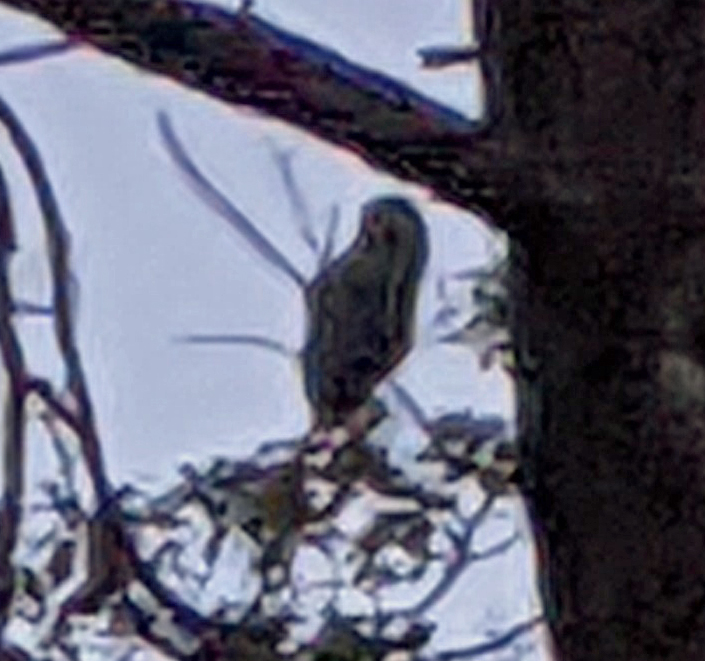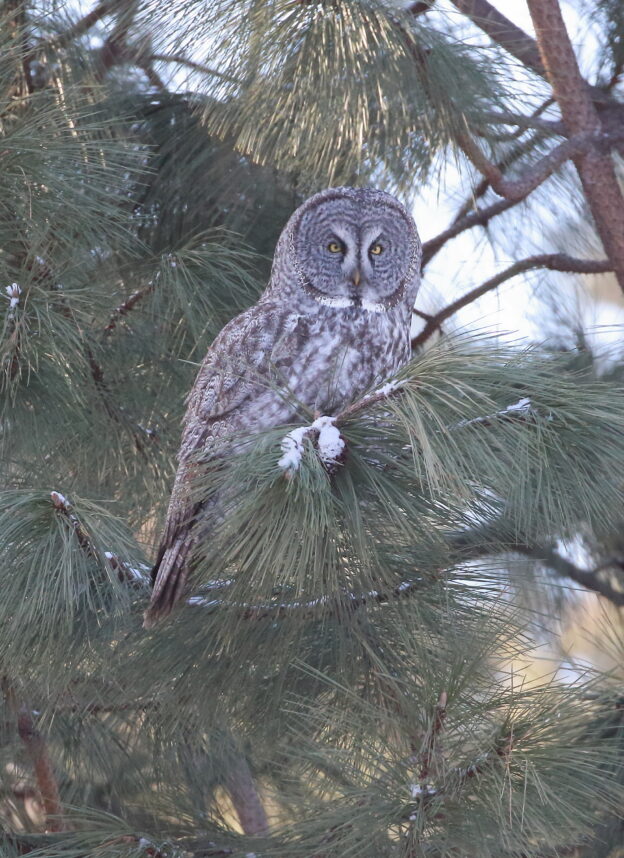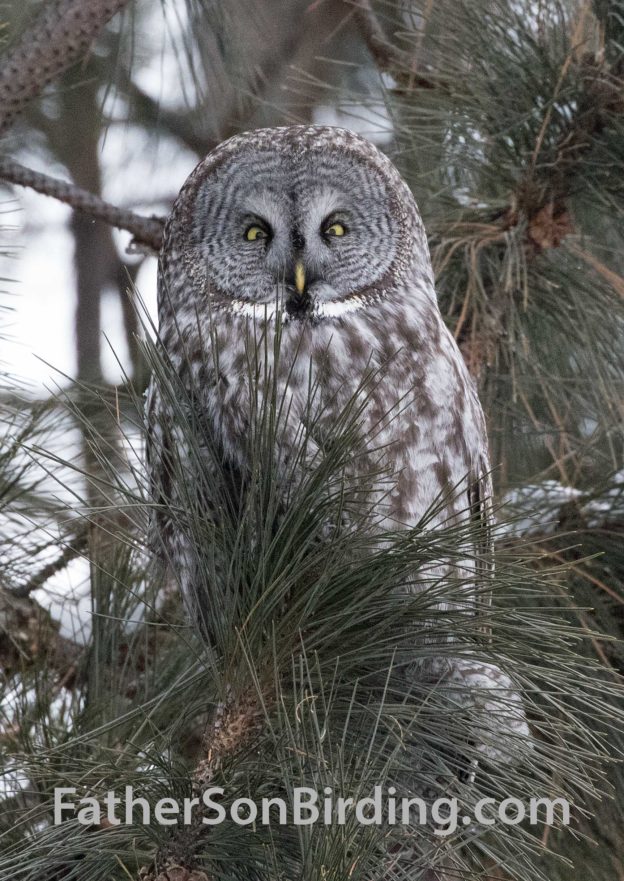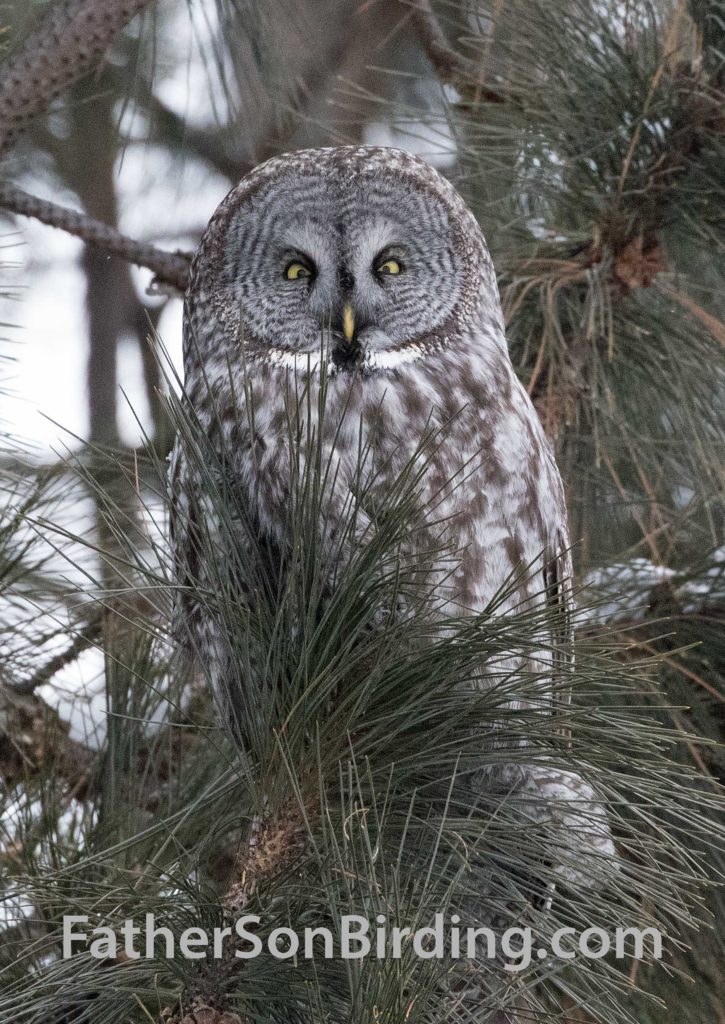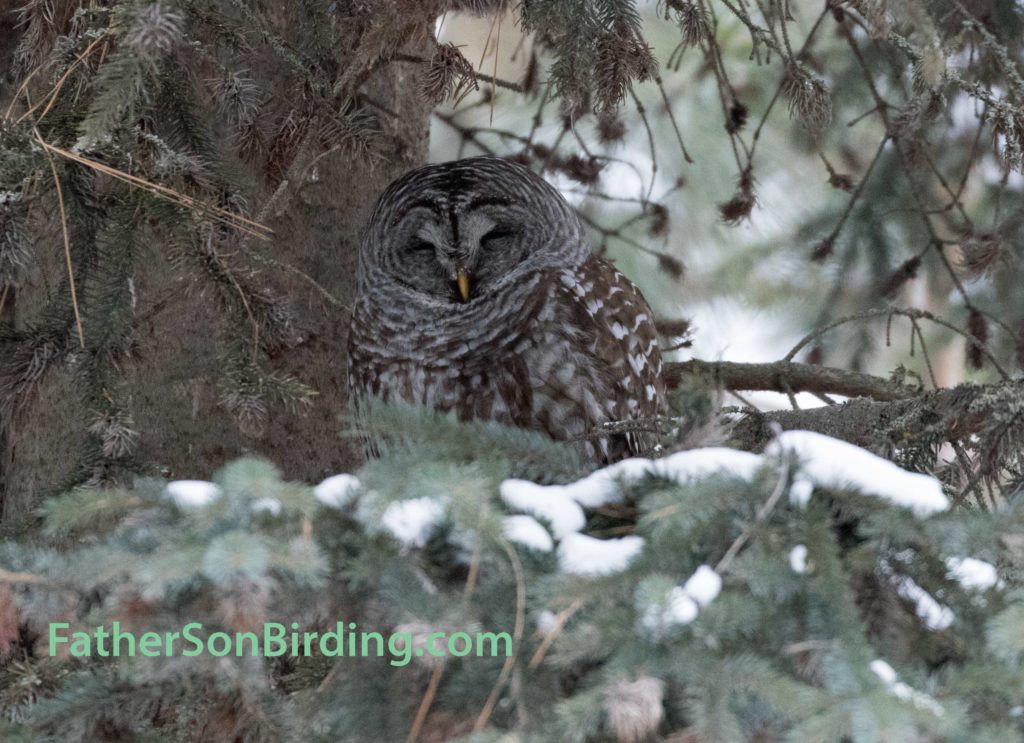Even though Braden’s job is to look for Northern Goshawks this summer, that threatens to be outshined by his remarkable experiences with owls. As if Northern Saw-whet, Western Screech, and Spotted owls weren’t enough, here he recounts an amazing encounter with yet another amazing owl—and one of the continent’s most elusive “other” birds.
The morning after seeing the Spotted Owl, our campsite was graced with a little rain. Apparently, rain is infrequent in the Sierra, and we welcomed the weather as both a boost for the forests and an opportunity to sleep in. I, however, could not sleep, and decided to go birding. While my job had me birding every day, I had only actually gone birding outside of work a few times so far, and figured this would be a good way to refresh myself before the rain ceased and we headed back to finish the same PAC we’d started yesterday.
Birding consisted of walking around Crandell Campground with my eyes on the skies. I had two rare targets in mind: Northern Pygmy-Owl and Black Swift. The former, my favorite owl species, had eluded us thus far on counts and I hoped to spot one posted on top of a dead snag during my walk. Black Swifts, meanwhile, came to mind because of the weather. These waterfall-nesters, which generally hunt hundreds of feet in the air, and up to dozens of miles from their nest sites, were known for being pushed to lower altitudes in overcast conditions, which just happened to be the conditions gracing Stanislaus National Forest today. Both birds were definitely long shots, but then again, why not shoot for the stars?
I did not find either of my targets on my walk, and headed back to the campground as the rain began to subside. My co-workers, who had all retreated to their tents, began to rise, and I started to load things into the truck when I heard twittering overhead. I looked up two see two large, slim birds race over the open sky above me. The looks were among the briefest I’ve ever had at birds, but they were enough.
“Holy Cow! Black Swifts!”

Sam, the other big birder in the group, was out of his tent in a flash, and we ran down the road after the swifts. They disappeared within seconds, headed to some other foraging destination, but not before Sam spotted them. It was his lifer, and a bird I’d only seen once, in Glacier Park five years before.
That evening, after finishing our survey, we met Kevin, the crew lead for the Spotted Owl, at the Pinecrest Ranger Station. An hour and a half later, we pulled up in a mystery location in the oak foothills of the Western Sierra, somewhere near the town of Twain Harte. In the past week, the owl crew had found Great Gray Owls here several times, some of the only known individuals of the species to occur in the state of California outside Yosemite National Park. We’d already heard the stories of finding the Great Grays, and how everyone on the owl crew had completely freaked out over it, and hoped to do the same tonight. The owls had been recorded in three locations all somewhat near each other, and our job tonight was to figure out if they were the same family of owls or multiple families by searching two of the locations at the same time.
I went with Kevin and Sam, while Ivara and Miles tagged along with Grant, a ranger for Stanislaus National Forest. None of the habitat made sense for what I thought I knew about Great Gray Owl. The owls in Missoula frequented open pine forests, and in Canada, the species nested in boreal bogs. Here, though, we walked through dense oak foothill habitat, complete with our first look at and experience with Poison Oak.
After quickly searching a stand of trees, the three of us loitered in a small meadow waiting for the sun to set. The elevation was lower than where we conducted goshawk surveys, and because of that we noted different bird species, including Acorn Woodpecker, Blue-gray Gnatcatcher and California Quail. Suddenly, Kevin heard something. Uphill, through the oaks, came the sound of strange yelps. Comparing the calls to Merlin revealed that these were indeed the begging calls of juvenile Great Gray Owls.

“Let’s go get em.” said Kevin, and we started up the hill as the sky grew gray, then indigo. Stars blinked into existence above us as we dodged snags and particularly large patches of Poison Oak, although walking through the rash-inducing plant was inevitable in some places. Thank god for long pants.
After twenty minutes of following the calls up the hill, Kevin held out a hand, then pointed upwards. There, on an oak tree up the hill from us perched the unmistakable silhouette of a Great Gray Owl, moving its head up and down as it called to its mother for food. After scanning the ground for Poison Oak, I sat down and lifted my binoculars to my eyes. Even with low light levels, I could make out the longer neck, facial disk and piercing eyes of the owl. The bird still lacked the clean look of an adult Great Gray, but it could already fly and thus was probably at least a month old. Soon, we spotted the shape of the second juvenile flush from a branch below the first. The experience was magical—sitting underneath the California night sky, amongst oaks, as one of the rarest and most famous creatures in the world called from a tree above us. We weren’t able to determine if this was the same owl family as before or a new one, but either way, these were owls I would never forget.
